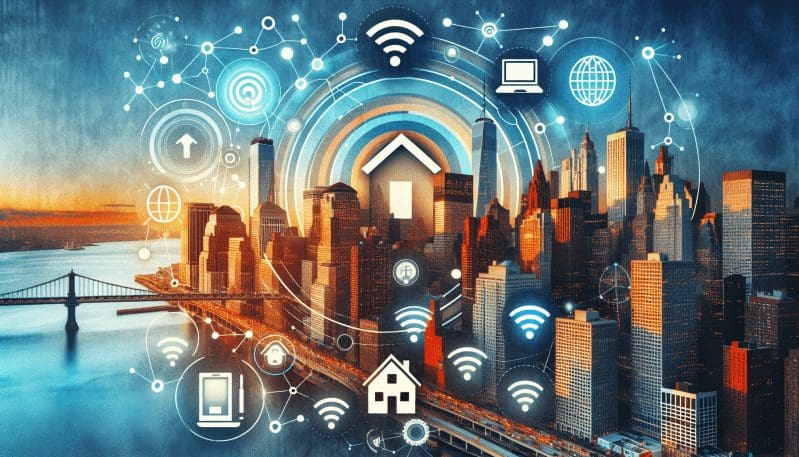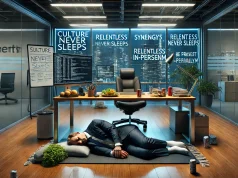The skyline of New York City paints the picture of a bustling metropolis where the pulse of business beats strongest within the towering pinnacles of its commercial real estate. However, the advent of the remote work revolution is redrawing this landscape, ushering in a transformative era for the city’s urban environment.
As the gig economy researcher for The Work Times, it’s imperative to unpack the multifaceted consequences of the remote work wave that has swept through NYC like a cultural nor’easter, altering the structure and soul of this iconic city.
### The Metamorphosis of Commercial Real Estate
The surge in remote work has left an indelible mark on New York City’s commercial real estate. Formerly bustling office towers now face an existential crisis, with vacancies soaring and landlords grappling with a new, dispersed workforce. This paradigm shift raises pivotal questions about the future of these commercial spaces. Innovative solutions, such as repurposing buildings into residential units, mixed-use developments, or co-working facilities, are now on the table, potentially reshaping the city’s architectural ethos.
### Local Businesses: Adapting to the New Normal
The once teeming streets, lined with cafes and shops catering to the daily commuter, are encountering an unprecedented challenge. The pivot to remote work means fewer footfalls and a drastic dip in customer volume during what used to be peak hours. Local businesses are compelled to evolve, adopting digital platforms, diversifying their offerings, and redesigning their services to cater not to the transient worker but to the residential community that now populates the daytime urban landscape.
### The Evolution of Public Transportation
NYC’s public transportation system, a lifeline for millions, has witnessed a dramatic decline in ridership. The implications are far-reaching, from financial strain on the Metropolitan Transportation Authority to a reevaluation of the city’s transit strategy. In the short term, this may manifest as reduced services and potential fare hikes. Long-term considerations, however, pivot towards the integration of flexible services and the reimagining of the city’s transit hubs as multifunctional spaces.
### Cultural Tapestry: The Workplace Redefined
The remote work revolution is not just reshaping New York City’s physical environment; it’s reweaving its cultural tapestry. The traditional office space, once a cornerstone of the professional world, is now just one thread in a complex web of workspaces that spans homes, cafes, and anywhere with an internet connection. This has fostered a newfound appreciation for work-life balance, flexible hours, and the autonomy of the modern worker, reshaping the employer-employee relationship and the concept of productivity.
### Economy and Daily Life: The Ripple Effect
For many New Yorkers, the daily commute was a ritual. The shift to remote work has altered the rhythm of life in the city. This has economic implications, including a potentially decreased demand for certain services and products, which, in turn, affects employment. The long-term economic impact is twofold: it presents challenges for traditional business models while simultaneously opening up a vista of opportunities for industries poised to capitalize on this new way of working.
### Urban Planning and Community Development
As remote work persists, urban planners and policymakers are at a crossroads. The lessons learned from this era will likely influence a reimagining of urban design, focusing more on creating livable, sustainable communities with amenities that support a decentralized workforce. This could be the catalyst for a more holistic approach to community development, blending residential, commercial, and recreational spaces in a way that caters to a broader range of needs and lifestyles.
### Innovating New York City’s Response
New York City has a storied reputation as a hub of innovation and adaptability. The remote work revolution tests this characteristic to its core. It invites city leaders, businesses, and communities to envision a future that maintains NYC’s economic vitality while embracing the changing landscape of work. Leveraging technology, redefining communal spaces, and fostering a supportive environment for businesses can pave the way for the city to continue thriving in an era of remote-centric work.
In conclusion, the remote work revolution is not merely a temporary phase but a profound evolution in the way we understand and interact with the urban fabric of New York City. As we assess the ongoing impact, it’s clear that flexibility, innovation, and a willingness to adapt will be the keystones in ensuring that the city remains a vibrant, dynamic force in the world of work.
The Work Times is committed to exploring these trends, engaging with our readers, and uncovering the stories of change as they unfold in this great city.


























